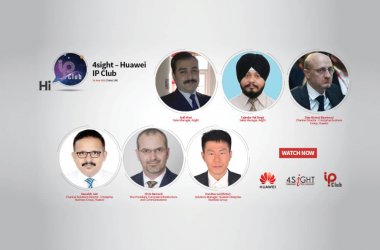
Are you in your comfort zone? It can be a great feeling, but organisations that operate exclusively within their comfort zones will miss opportunities and often adopt everything in line with their enterprise personality, writes Hung LeHong, Research VP, Gartner.
Organisations should recognise their risk comfort zones but be prepared to step outside them depending on the strategic importance of an emerging trend or innovation. That is, they should aim to be selectively aggressive. Where it can lead to significant competitive advantage, organisations should move early, even if they are not normally aggressive.
Here are some of the more significant emerging trends and “tipping point technologies” that enterprises should consider to deliver new value and experiences to customers and citizens.
Bring your own everything
Consumerisation makes it acceptable for enterprise employees to bring their own personal devices into the work environment, a trend known as bring your own device (BYOD). This trend is tempered, however, by a few technologies that have yet to reach their tipping points. The first is hosted virtual desktop. Performance levels and usability are improving, but not yet adequate for enterprises to port images of employees’ corporate desktops onto their tablet devices. The second technology, HTML 5, must mature more to allow development of applications and services across devices.
The Internet of Things
Gartner defines the Internet of Things (IoT) as the network of physical objects accessed through the Internet that contain embedded technology to sense or interact with their internal states or the external environment. Conceptually, IoT describes how the Internet is being used to link smart devices, such as consumer items, automobiles, city infrastructure, enterprise assets and a myriad of other physical assets, so that these new endpoints can be controlled and/or can create and receive a data stream from one another or from conventional computing environments.
When these devices (“things”) directly (or indirectly) connect to the Internet, they become an extension of the enterprise and mobile computing environments. New experiences, operating efficiencies and business models can be created and deliver enhanced value through improved utilisation of these physical assets. The potential impact of the IoT is vast, reaching to every corner of technology, business and the consumer experience. The IoT has been emerging for decades, with origins in factory automation, machine-to-machine (M2M) interaction and embedded systems. Its impact will increase in the coming years as the costs of technology and connectivity continue to fall, and it becomes even more pervasive.
Big Data and global-scale computing at small prices
This broad scenario portrays a world in which analytic insight and computing power are nearly infinite and cost-effectively scalable. Once enterprises gain access to these resources, many improved capabilities are possible, such as better understanding customers or better fraud reduction. The tipping-point technologies that will make this scenario accessible to enterprises, governments and consumers include cloud computing, Big Data and in-memory database management systems.
The cloud concept sits behind all large-scale computing needs that can work in a centralised and often public architecture — and therein lie the constraints. Currently, the industry is only beginning to produce a solution that meets the needs of many enterprises. Security, integration, cost and privacy stand out as today’s biggest challenges.
Big Data is often described as a style of data analysis and management that is marked by very large data volumes, that comes in at various velocities (including real time), and that is composed of a variety of data types (structured and unstructured). While the hype in the industry is focused on the fact that we can now deal with each of these three facets, less attention is being focused on how to do so at low costs that scale reasonably. This tipping-point technology will really blossom when the cost equation works out — when enterprises and governments get sufficient benefit from the costs of handling big data.
All enterprises run on some form of enterprise resource planning (ERP) and legacy applications. These systems are usually dependent on some form of database that accesses data on physical storage drives. In-memory database management systems will remove this need by making database access into something that occurs in memory chips — which are much faster than disks. The result is the legacy systems that run our corporate and government world will become significantly faster. Although cloud computing gets much of the spotlight, in-memory database management systems are the tipping point that will benefit the enterprise greatly once the technology matures.
The future of payments
In a near-cashless world scenario, most transactions are electronic and technologies such as near field communication (NFC) payment will enable it. NFC, however, will not be widely adopted for mobile payment scenarios unless certain devices, such as Apple’s iPhone, embed NFC chips into their models. There are other payment technologies that aim to turn the smartphone into a wallet, such as mobile over the air (OTA) payment. The level of success of these technologies will be country-specific, so unlike other limiting factors, success and failure will be local.





